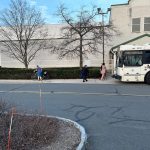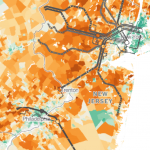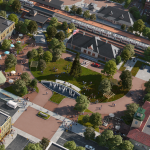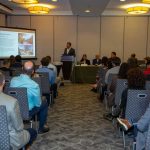New Jersey Future Blog
Creating Safe Communities and Options for Walk-Bike-Ride Transportation in New Jersey
August 8th, 2023 by Sneha Patel
“Every decision about transportation is an opportunity to build a clean, healthy, and more prosperous future,” declared Christopher Coes, Assistant Secretary, U.S. Department of Transportation (DOT) as he provided prepared remarks to open the session “Delivering Walk-Bike-Ride Transportation in New Jersey” at the 2023 Planning and Redevelopment Conference co-hosted by the NJ Chapter of the American Planning Association and New Jersey Future.
New Jersey has an exceptional opportunity in the transportation sector to expand walk-bike-ride options in many communities, especially in the face of the large increase in federal funding for transportation, and the unlimited discretion the state has for the use of these funds. The Bipartisan Infrastructure Act allowed DOT to award $1 billion dollars through Safe Streets to create safe corridors, and $4.5 million over the next five years to improve efficiency by providing more affordable public transit. The number of pedestrian fatalities has climbed to the highest levels since 1981, and during 2020-2022 more individuals died in rural, Black, and brown underserved communities, stressing the need for an infrastructure shift to prioritize safety. Crowded streets and large populations in urban neighborhoods can make pedestrians feel unsafe, and the lack of sidewalks along high-speed eight lane stroads in suburban neighborhoods elicit the same feeling. Emphasizing pedestrian safety and encouraging walk, bike, and ride options requires committed local leadership to seek and earn allocated resources and funding for their communities.
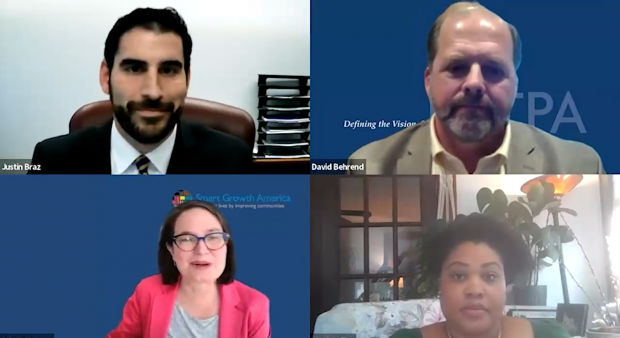
The virtual plenary Delivering Walk-Bike-Ride Transportation in New Jersey at the 2023 NJ Planning and Redevelopment Conference. Top from left to right: Justin Braz, Assistant Commissioner for Transportation Policy and Chief of Staff, New Jersey Department of Transportation; David Behrend, Executive Director, North Jersey Transportation Planning Authority (NJTPA). Bottom from left to right: Beth Osborne, Vice President for Transportation and Thriving Communities, Smart Growth America; Nicole Miller, Principal, MnM Consulting.
The session was moderated by Beth Osborne, Vice President for Transportation and Thriving Communities, Smart Growth America. Panelists offered their insights on the successes and challenges of implementation at the local level. They included: David Behrend, Executive Director, North Jersey Transportation Planning Authority (NJTPA); Justin Braz, Assistant Commissioner for Transportation Policy and Chief of Staff, New Jersey Department of Transportation; Nicole Miller, Principal MnM Consulting; and Christopher Coes Assistant Secretary, U.S. DOT.
Keynote speaker Christopher Coes described the federal government’s strategy for decarbonization and the ambitious goal of net zero carbon emissions nationwide by 2050. Transportation accounts for the major share of U.S greenhouse gas emissions, which is why the DOT, Environmental Protection Agency, and the Department of Housing and Energy have entered the first known memorandum of understanding (MOU) to decarbonize the transportation sector, releasing the U.S. National Blueprint for Transportation Decarbonization to assist states and communities. He stressed the importance of land use in increasing convenience for individuals through improved community design. Schools, job centers, and stores should be in proximity to each other to reduce commute burdens and expand opportunities for alternative transportation.
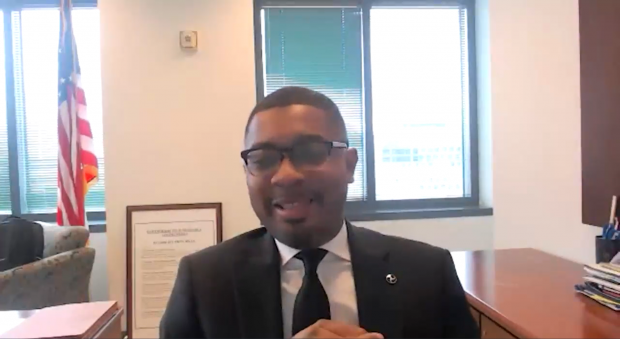
Keynote speaker Assistant Secretary Christopher Coes with the U.S. Department of Transportation during the virtual plenary at the 2023 NJ Planning and Redevelopment Conference.
Providing technical assistance to communities is necessary to achieve meaningful results. As part of the Thriving Communities cohort, East Orange has been selected as the first participant to receive hands-on technical assistance to connect the communities divided by I-280. Coes recognized that land use needs to be at the forefront of improving transportation infrastructure, adding that DOT provides developing tools and research to explain the connection between carbon emissions and land use to better inform their transportation policies.
“In the next 20 years, the Department of Transportation may be called the Department of Mobility,” Justin Braz mused. He noted increased funding and staff at NJDOT to liaise with communities and provide community members with multiple opportunities to move around. Increasing bikeways and trails and improving sidewalks are crucial to creating livable walkable communities. Braz highlights the seriousness of pedestrian safety and their focus at NJDOT on highway safety. He noted the initial data for 2023 for NJ has been positive; as of June 2023 the fatality rate is down 22% which is an improvement, but conceded “one death is one too many.”
David Behrend described the shift in federal funds from highway to public transit, such as electrifying bus fleets and transit improvements. He explained, “Everyone is rowing in the same direction right now, we want to take advantage of it when we can.” The North Jersey Transportation Planning Authority (NJTPA) aims to create the first-ever regional active transportation plan to improve bike and pedestrian mobility and safety. Behrend pointed out the need for “low-stress facilities,” where pedestrians feel it’s safe and convenient to walk, bike, or ride without the high traffic of cars. One key project Behrend emphasized was developing pathways like the Morris Canal Greenway, a 111-mile historic route cutting across the state from the Delaware River to Hudson County and connecting six counties. Behrend noted, “with Infrastructure Investment and Jobs Act (IIJA) funding, all the existing programs have gotten a degree of additional funding which …allows for more and larger projects.”
“Land use is key, but only comes after an internalized shift,” Nicole Miller declared, speaking on the difficulties of engaging people in slow-moving transportation improvement efforts and the potential rejection of such radical change. A perspective shift can be difficult when the ideal concept of the “American Dream” pressures households into single-family homes with two-car garages. She expressed “car-centric design has eroded urban centers, engrained a reliance on vehicles, promoted less-efficient energy and land-use, and unhealthily tied our economy to fossil fuels.” The cost of transforming the transportation sector cannot be ignored, she admitted, but “that cost must be measured against the lives lost, increased emissions produced, inefficient energy and land use, fewer housing options, and health concerns.”
With the shifting culture and more complex challenges of today, programs that weren’t created for the present ideology have to evolve. Braz described reshifting priorities to focus on long-term plans and the importance of committing to a full Complete Green Streets policy, with priority granted to projects that can be completed in two to three years.
Regional and local leaders should have a detailed plan that identifies specific needs to take advantage of existing funds. Behrend highlighted the NJTPA’s local demonstration project library for communities to access materials to test a temporary project setup and survey their impact. Braz reminded viewers not to overlook the value in targeting areas that only require minute fixes to address concerns like broken streetlights or weathered roads, in turn building community support behind quick improvements.
Shifting the attention towards public transportation can be done by involving community members, increasing public transportation options, and adding cost-friendly electric vehicles for younger people. Spreading awareness that increasing highway width does not decrease congestion, rather it only induces further demand and begets greater congestion. Cars have to be the most burdensome option, and walk-bike-ride should be better, cheaper, and faster Nicole Miller asserted. She continued that taking the train to work and entertainment centers “are sacrifices that people have to make, and part of the problem is we need a revised vision to make radical change.”
Related Posts
Tags: bike, Complete Streets, pedestrians, safety, street safety, stroads, Transit, Transportation, transportation funding, walkability

